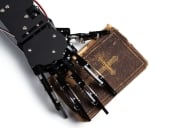You have /5 articles left.
Sign up for a free account or log in.
A week from today (on Wednesday, Oct 15), some 6000-plus campus technology professionals, plus another 2000 or so executives who represent the various realms of the technology industries that service higher education, will convene in Anaheim for the EDUCAUSE conference, the annual gathering of higher education’s technology tribes.
As in past years, the convention center and hotels that host the conference will be percolating with people talking about a wide range of technology stuff: new and interesting products, interesting applications of current products, campus case studies of what various institutions did well that might be informative for others, and panels laden with folks (myself included) offering opinions and epiphanies about what higher education currently does well and must do better to leverage the value of technology to enhance learning and student outcomes and to improve campus management and operations.
For both technology users and technology providers (a kindler, gentler term than vendors), the EDUCAUSE gathering can be laden with great hope. For campus IT users, support staff, and IT leaders, the conference presents an opportunity for discovery: two or three days of new technologies and new insights coupled with both planned and random conversations with members of the tech tribe.
For technology providers, the EDUCAUSE conference formally launches the selling cycle: in the run-up to the conference, various providers announce new products and services as a way to seed conversations the providers hope will occur on the exhibit floor and in the corporate suites, to be followed by on-campus conversations. If the providers are truly fortunate, the seeding process will help them secure contracts by the end of the academic year in June 2014.
But others will take a more pragmatic (perhaps even caustic) view of what they see and hear at EDUCAUSE. They are painfully aware of the great aspirations education has long held for the role of technology in teaching, learning, and campus operations, and how what we can grasp too often has fallen (far) short of what we seek and what we need.
Indeed, I sense a new level of pragmatism among many CIOs and senior campus IT officers. It’s best described as a play on Ronald Reagan’s famous “Trust but Verify” quip about dealing with the Russians during the waning years of the Cold War. For a growing number of campus IT officials, the new mantra for dealing with both campus technology evangelists and with tech industry providers seems to be “Cautiously Trust, Aggressively Verify.”
Cautiously trust stems from the understandable, self-reinforcing need of many campus IT officials and IT advocates to believe that technology can – indeed does – make a difference, hopefully a huge difference, in higher education. Certainly the content (digital content – images, data bases, online references and resources, and simulations) available to students and faculty today to support and supplement instruction is far superior to the available instructional content just five, let alone 10 or 20 years ago. But does the technology, per se, make a difference in learning and educational outcomes?
For example, consider Learning Management Systems, which are now ubiquitous across higher education. Is it the LMS itself that affects (hopefully improves) instruction and learning outcomes, or is the LMS simply a (better) vehicle to deliver instructional content to students? That’s a pressing question now that we are well into the second decade of the LMS experience. Pushed to provide conclusive data about the instructional benefits of the LMS (or other instructional technologies), similar to the data that documents the “proof of benefit” required to bring new medications to market, we have to acknowledge that much of what passes for fact or wisdom is too often little more than opinion or epiphany. We hope and believe that technology can make a difference, but we often lack the hard data to prove that it does so.
Aggressively verify speaks to the pressing need to “bring data” into the planning and policy conversations, on campus and elsewhere, about the role of technology in learning and campus management. Four decades into the much-discussed (and some would say much-hyped”) technology revolution in education, it is clear that opinion and epiphany (should) no longer suffice to inform planing and shape campus policy- and decision-making.
Perhaps technology advocates (myself included) would do well to ask technology evangelists and technology providers the question that thoughtful faculty seek to instill in their students: how do you know?
So whether you will be Anaheim next week for EDUCAUSE for the gathering of the technology tribe, are on campus engaged in an informal conversation with a colleague, or find yourself sitting in on a presentation from a technology provider, don’t be afraid to ask any of these individuals how do you know? It’s always been a good question for our students. And it is also an appropriate question for technology advocates, evangelists, and providers.
Cautiously trust, aggressively verify.
AND ON RELATED MATTERS: Ever wonder how technology providers view the IT efforts of their campus clients? If so, please CLICK HERE for The ERP Forum, a new, quarterly, “through the digital looking glass” conversation among senior executives from Campus Management, Ellucian, Jenzabar, and Oracle about the challenges that their campus clients confront in their efforts to leverage their investment in ERP/administrative systems. The first conversation, available now as an audio download, asks the question “what do campus clients do well, and what could they do better.” The conversation closes with some discussion about what campus officials should ask when they talk with the representative of these firms at the 2013 EDUCAUSE conference. (The ERP Forum is a production of The Campus Computing Project, and produced with support from Campus Management, Ellucian, Jenzabar, and Oracle).






